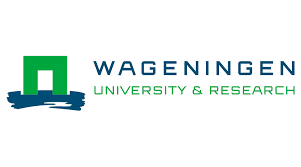Wageningen University & Research: Digital Twin for water management
A new project, called ‘Digital Twin for Water Management, has been initiated to build a Digital Twin for water management by Dutch water boards. The concept is a next level in modelling solutions.
Generally speaking, a digital twin is the combination of a physical twin (an existing or to be constructed real world object, e.g. a car factory), a virtual twin (an up-to-date digital copy of the real-world object; a model in its broad sense), and the two-way online communications between these two. Sensory data from the physical object are (semi-)continuously send to the virtual copy to improve the digital representation. Beyond that, the changed state of the virtual part can be used to automatically send information to the physical object and even to make changes to it, without human interference.
Dutch water management
Digital Twins are already in wide use in advanced production systems, such as car factories and other applications reliant on the Internet of Things. The new project will work towards a similar advanced digital construct for Dutch water management. In this case the physical system will be the monitored outdoor water system and the virtual twin will be a set of integrated computational models, (AI-) algorithms, visualisation systems/dashboards and the structure holding these different parts together. A Digital Twin for water management thus means a further integration and use of data, models, workflows, and its implementation in the complex water boards operational structures.
Tackling the challenge: towards a Digital Twin
Given the challenging environment in which the project takes place, the goal is to make realistic steps towards a mature Digital Twin. To that end, the project will explore possible ways in which Digital Twinning can contribute to modern water management solutions on three different topics: water purification plants, water quality, and drought.
How close the digital twin will get to the ‘car factory’ implementation level, differs between these three topics. At purification plants AI-algorithms are in use more generally already, while water quality modelling and prediction and its coupling with decision making are done in a more offline mode. Therefore, the achievable Digital Twin level is more restricted for the latter than for the former. Finally, the different topics will be integrated within one Digital Twin framework. This framework should be applicable to water boards across The Netherlands. In the end, the technological solutions are probably not the greatest challenge. Getting this system to work within the operational, organizational, and policy structures of Dutch water boards will receive proper attention within the project.

